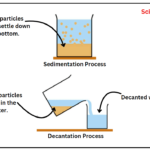Top 25 Indian Independence Act MCQ for UPSC, SSC, RRB
Welcome to this challenging Indian Independence Act, 1947 MCQ quiz! In this quiz, we’ve compiled the top 25 multiple-choice questions based on the Indian Independence Act, 1947. These MCQ quizzes will test your knowledge and boost your preparation for UPSC, SSC, Railway, and State PCS exams.
So, are you ready to score 25/25? Let’s find out how well you really know the Indian Independence Act, 1947. Let’s begin with question number 1.👇
1. Which one of the following dates marks the legal passing of the Indian Independence Act, 1947?
A. 15 August 1947
B. 3 June 1947
C. 18 July 1947
D. 26 January 1950
c
The Indian Independence Act received Royal Assent from the British Parliament on 18 July 1947. Although independence was achieved on 15 August 1947, the Act legally came into force from 18 July 1947.
2. Who introduced the Indian Independence Bill in the British Parliament?
A. Clement Attlee
B. Lord Mountbatten
C. Stafford Cripps
D. Lord Listowel
d
The Indian Independence Bill was introduced by Lord Listowel, Secretary of State for India, in the House of Lords on 4 July 1947.
3. The Indian Independence Act was passed during the government of which British Prime Minister?
A. Winston Churchill
B. Clement Attlee
C. Harold Macmillan
D. Ramsay MacDonald
b
The Act was passed under Clement Attlee, Prime Minister of the UK from 1945–1951 who announced Britain’s decision to grant independence.
4. The Indian Independence Act, 1947 was based primarily on:
A. August Offer, 1940
B. Cripps Mission, 1942
C. Wavell Plan, 1945
D. Mountbatten Plan, 1947
d
The plan for transfer of power to the Indians and partition of the country was laid down in the Mountbatten Plan, the last Viceroy of India, on 3rd June 1947. This plan outlined the partition of British India into two independent dominions—India and Pakistan—and set August 15, 1947, as the date for the transfer of power. It was accepted by major political parties (Congress, Muslim League, and Sikh leaders).
5. The Indian Independence Act is sometimes informally called:
A. Swaraj Act
B. Freedom Act
C. Partition Act
D. Independence Bill
c
The Indian Independence Act is sometimes informally called the Partition Act because it resulted in the partition of British India.
6. According to the Indian Independence Act, 1947, the office of which authority was abolished?
A. Prime Minister of India
B. Secretary of State for India
C. Governor of Provinces
D. Chief Commissioner
b
The Indian Independence Act, 1947, abolished the office of the Secretary of State for India. This Act transfers the powers to the respective Governments of India and Pakistan.
7. Under the Indian Independence Act, the Constituent Assemblies of India and Pakistan were empowered to:
A. Draft and adopt their own constitutions.
B. Continue under the Government of India Act, 1935 permanently.
C. Make laws only on state subjects.
D. Take decisions only after British approval.
a
Under the Indian Independence Act, the Constituent Assemblies of India and Pakistan were given full power to frame and adopt its own constitution and to amend or repeal any existing laws.
8. The boundary line between India and Pakistan was drawn by
A. Stafford Cripps
B. Lord Mountbatten
C. Sir Cyril Radcliffe
D. John Simon
c
Sir Cyril Radcliffe headed the Boundary Commission which demarcated the borders of India and Pakistan after independence.
9. Who was the last British Governor-General of India after the implementation of the Indian Independence Act?
A. Lord Wavell
B. Lord Mountbatten
C. C. Rajagopalachari
D. Stafford Cripps
b
Lord Mountbatten became the first Governor-General of independent India until June 1948.
10. Who was the first Indian Governor-General of India after independence?
A. Jawaharlal Nehru
B. Vallabhbhai Patel
C. C. Rajagopalachari
D. Dr. Rajendra Prasad
c
C. Rajagopalachari became the first Indian Governor-General in June 1948.
11. Who was appointed as the first Governor-General of independent Pakistan?
A. Liaquat Ali Khan
B. Muhammad Ali Jinnah
C. Iskander Mirza
D. Ayub Khan
b
Muhammad Ali Jinnah became the first Governor-General of Pakistan.
12. Under the Indian Independence Act, which body acted as the interim constitution for both dominions until new constitutions were framed?
A. Government of India Act, 1919
B. Government of India Act, 1935
C. Cabinet Mission Plan
D. Nehru Report, 1928
b
The Government of India Act of 1935 served as the interim constitution for India and Pakistan until their respective new constitutions were adopted after independence. This Act provided the framework for governance.
13. How many provinces of British India were directly affected by the Partition of 1947?
A. 2
B. 3
C. 4
D. 5
b
The Partition of 1947 directly affected three provinces of British India: Punjab (divided between India and Pakistan), Bengal (divided into West Bengal (India) and East Pakistan, now Bangladesh) and Sylhet district of Assam.
14. Who was the last Viceroy of India?
A. Lord Wavell
B. Lord Curzon
C. Lord Mountbatten
D. Lord Irwin
c
Lord Mountbatten served as the last Viceroy and the first Governor-General of independent India.
15. Approximately how many princely states existed in India at the time of independence in 1947?
A. 125
B. 275
C. 565
D. 650
c
At the time of India’s independence in 1947, there were approximately 565 princely states. These states were not formally part of British India but were under the suzerainty of the British Crown through subsidiary alliances.
16. Which of the following services were divided between India and Pakistan under the provisions of the Act?
A. Armed Forces
B. Civil Service and Administrative Services
C. Railways
D. All of the above
a
Division of armed forces, civil administration, railways and other assets like power plants, ports, etc.
17. Which of the following was not a provision of the Indian Independence Act, 1947?
A. Creation of two dominions – India and Pakistan
B. Abolition of the office of the Secretary of State for India
C. Empower the constituent assemblies of the two dominions to frame and adopt any constitution for their respective nation.
D. Continuation to appointment to civil services and reservation of posts by the secretary of state for India.
d
The Indian Independence Act, 1947, specifically abolished the office of the Secretary of State for India, so there could be no continuation of appointments or reservations by that office.
18. In the context of the Indian Independence Act, 1947, the term “lapse of paramountcy” refers to
A. End of British control over trade in India
B. End of British control over princely states
C. End of British rule over provinces only
D. End of British legal system in India
b
In the context of the Indian Independence Act of 1947, the term “lapse of paramountcy” refers to the termination of the authority of British Crown and control over the princely states of India.
19. Under the Indian Independence Act, 1947, who was the supreme constitutional authority in each dominion?
A. Prime Minister
B. Governor-General
C. British Monarch
D. Constituent Assembly
c
India and Pakistan remained dominions under the British Commonwealth, with King George VI as head of state, represented by a Governor-General. Note: If the question uses words like “constitutional head”, “supreme authority”, or “head of state” → Answer is British Monarch.
20. Under the Indian Independence Act, 1947, who was the executive head of each dominion?
A. Prime Minister
B. Governor-General
C. British Monarch
D. President
b
The Governor-General was the King’s representative and exercised all executive powers in the dominion on the advice of the dominion’s ministers. Note: If the question uses words like “executive head”, “administrative authority”, or “chief executive” → Answer is Governor-General.
21. The Indian Independence Act, 1947 came into force on
A. 18 July 1947
B. 14 August 1947
C. 15 August 1947
D. 3 June 1947
c
The Act was passed on 18 July 1947, but it came into effect on 15 August 1947, marking the formal independence of India and Pakistan.
22. Which section of the Indian Independence Act, 1947, conferred full legislative powers on the legislatures of the new dominions, including the power to repeal or amend any law made by the British Parliament?
A. Section 5
B. Section 6
C. Section 8
D. Section 10
b
Section 6 of the Indian Independence Act, 1947, gave full legislative powers to each new dominion (India and Pakistan) to make any laws, including the right to repeal or amend British laws.
23. Which section provided that the Constituent Assembly would act as the Dominion Legislature until a constitution was framed?
A. Section 5
B. Section 6
C. Section 7
D. Section 8
d
According to Section 8(1) of the Indian Independence Act, 1947, the Constituent Assembly was empowered to act as the Dominion Legislature until a new constitution was framed.
24. Which British King gave assent to the Indian Independence Act, 1947?
A. George V
B. Edward VIII
C. George VI
D. William IV
c
King George VI gave royal assent to the Indian Independence Act, 1947. This act formally partitioned British India into the two independent dominions of India and Pakistan. The Act received royal assent on July 18, 1947, and the two new nations came into being on August 15, 1947.
25. Under which section of the Indian Independence Act was British paramountcy over princely states abolished?
A. Section 5
B. Section 6
C. Section 7
D. Section 8
c
Section 7 of the Indian Independence Act, 1947, abolished British paramountcy or suzerainty over princely states. This section lapsed all treaties and agreements between the British Crown and the princely states.
Quiz Results
Total Questions: 0
Correct Answers: 0
Incorrect Answers: 0
Score: 0%






